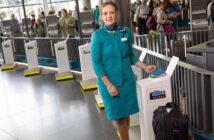
Norse Atlantic is making strategic route cuts, concentrating on Aircraft, Crew, Maintenance, and Insurance operations to improve profitability.
The airline is transitioning to focus on high-demand routes in Southern Europe and expanding its ACMI and charter services.
By streamlining its fleet to Boeing 787-9s and allocating at least half of its capacity to ACMI/charter flying, Norse aims to stabilise revenue and reduce market risk.
Strategic partnerships, such as with Air Peace, and an emphasis on cost efficiency support the airline’s transition amidst challenges in brand recognition and operational reliability.
Norse’s strategy reflects a pragmatic approach to the transatlantic market, learning from past challenges faced by Norwegian Air Shuttle and WOW Air.
Significant losses
A Norwegian low-cost, long-haul airline founded in 2021, Norse Atlantic Airways, has been refining its strategy to address financial challenges and achieve sustainable profitability.
A focus on cost efficiency and ancillary revenue propel this transition. While challenges like seasonality, brand recognition, and operational reliability persist, Norse’s hybrid model leverages its operational strengths to navigate the volatile low-cost, long-haul market.
This strategy reflects a pragmatic adaptation to the realities of the transatlantic market, drawing lessons from the struggles of predecessors like Norwegian Air Shuttle and WOW Air, and positioning Norse as a more resilient player in the long-haul, low-cost sector.
Facing significant losses, the airline has shifted its focus from an expansive scheduled route network to a more flexible and diversified business model emphasizing Aircraft, Crew, Maintenance, and Insurance (ACMI) and charter operations, while streamlining its fleet and cutting underperforming routes. Below is a detailed breakdown of its evolving strategy, particularly as it relates to route reductions and the pivot toward ACMI and charter operations.
Norse Atlantic has significantly scaled back its scheduled route network, particularly in the U.S., to optimize operations and focus on high-demand markets. This involves:
The airline has eliminated 12 U.S. routes and ceased operations to five U.S. airports, including the permanent cancellation of its London Gatwick to Las Vegas route and the planned termination of the Gatwick to Miami service by 2025. These cuts reflect a strategic retreat from highly competitive or low-yield markets.
Norse is redirecting its efforts toward Southern European markets, where transatlantic demand remains robust. The airline launched a Rome Fiumicino to Los Angeles route on April 1, 2025, operating five times weekly, and plans to introduce an Athens to Los Angeles route in June 2025. These routes target strong leisure travel demand and higher yields. Additionally, Norse is increasing seasonal services to destinations like Bangkok and Cape Town to capitalize on peak travel periods.
Reducing frequencies
While expanding in some areas, Norse is reducing frequencies on other routes, such as flights from Oslo to New York’s JFK, and trimming capacity on certain transatlantic sectors to better align with demand. The airline has emphasized “careful route selection” to improve load factors and capture higher fares.
This route rationalization aims to reduce exposure to seasonal fluctuations and competitive pressures in the transatlantic market, which has historically challenged low-cost, long-haul carriers like Norse’s predecessor, Norwegian Air Shuttle.
A cornerstone of Norse’s revised strategy is a significant pivot toward ACMI and charter operations, which provide more stable revenue streams and reduce market risk compared to scheduled flights.
Half capacity to ACMI
Norse plans to dedicate at least 50% of its capacity to ACMI and charter flying, particularly during the winter season when scheduled transatlantic demand weakens. This shift began gaining traction in Q4 2024, with a notable uptick in such operations. For instance, in February 2025, Norse operated 137 ACMI/charter flights compared to 30 in February 2024, contributing to a 66% year-on-year increase in passenger numbers to 84,335.
A prominent example is Norse’s ACMI agreement with Air Peace, signed in February 2024, to operate four weekly flights between Lagos and London Gatwick starting in April 2024. This deal leverages Air Peace’s slots at Gatwick and uses Norse’s Boeing 787-9s, with potential for long-term collaboration. Similar agreements, such as with Air Europa, allow Norse to generate additional income during low-demand periods.
Norse is negotiating multi-year ACMI and charter contracts to lock in revenue and reduce exposure to market volatility. These agreements aim to stabilize cash flow and balance the seasonality inherent in transatlantic scheduled operations.
ACMI and charter operations enable Norse to utilize its fleet more efficiently, especially during off-peak seasons, by leasing out aircraft, crew, maintenance, and insurance services to other airlines. This approach mitigates the financial strain of operating a full scheduled network year-round.
Fleet Streamlining
By prioritizing ACMI and charter services, Norse is adopting a model akin to specialized wet-lease operators like HiFly, though it continues to maintain a core scheduled network. This hybrid approach seeks to balance risk and reward in a challenging market. Meanwhile, Norse has taken steps to optimize its fleet to support its strategic shift and reduce operational costs:
The airline decided to phase out its three Boeing 787-8s, focusing exclusively on a uniform fleet of 12 Boeing 787-9s. This decision, announced in August 2024, enhances operational flexibility and reduces maintenance and training costs associated with operating multiple aircraft types. The 787-8s, which were subleased, had shorter lease terms and were returned early, generating an accounting gain.
Norse plans to operate up to 12 of its 15 aircraft by summer 2024, with the remaining three leased out until at least 2025. By focusing on the 787-9s, which have greater capacity and range, Norse can better serve long-haul routes like Rome to Los Angeles and optimize ACMI operations.
The airline has achieved “strong unit-cost numbers,” which it claims validate the viability of the long-haul, low-cost model. Streamlining the fleet and increasing ACMI/charter operations further lowers unit costs by maximizing aircraft utilization and reducing idle time.
Norse’s strategic pivot is driven by persistent financial challenges and lessons learned from its initial years:
The airline reported a $169m net loss in 2023 and a $31.9m net loss in Q2 2024, despite revenue growth. However, it achieved its first quarterly net profit of $1.6m in Q3 2023 and an operating profit of $4.6m in Q3 2024, indicating progress toward profitability. The focus on ACMI and charters aims to narrow losses and stabilize finances.
Norse faced liquidity pressures in 2024 due to failed strategic investment talks, softening market conditions, and a “tail-heavy” summer booking curve. The airline secured $15m in new capital and pursued working capital initiatives to address these issues. The shift to ACMI/charter operations is part of a broader effort to de-risk the business and improve cash flow.
Norse is joining the Global Distribution System (GDS) in 2024 to expand its reach to corporate and leisure travel agents, potentially boosting scheduled flight bookings. Additionally, the airline is developing its cargo business and focusing on ancillary sales to diversify revenue streams.
Challenges and Risks
The demand for ACMI and charter services often peaks in summer, overlapping with Norse’s scheduled transatlantic operations, which could limit leasing opportunities.
Norse struggles with brand recognition, even in Norway, compared to its predecessor, Norwegian Air Shuttle. This lack of visibility could hinder its ability to attract passengers for scheduled flights.
Recent air traffic control delays and airport congestion have impacted punctuality, with only 70% of flights departing on time in February 2025, down from 84% the previous year. This could affect customer satisfaction and ACMI contract reliability.
Norse faces competition from established carriers like British Airways and Virgin Atlantic on routes like Lagos to London, requiring it to maintain cost advantages and service quality in ACMI operations.



